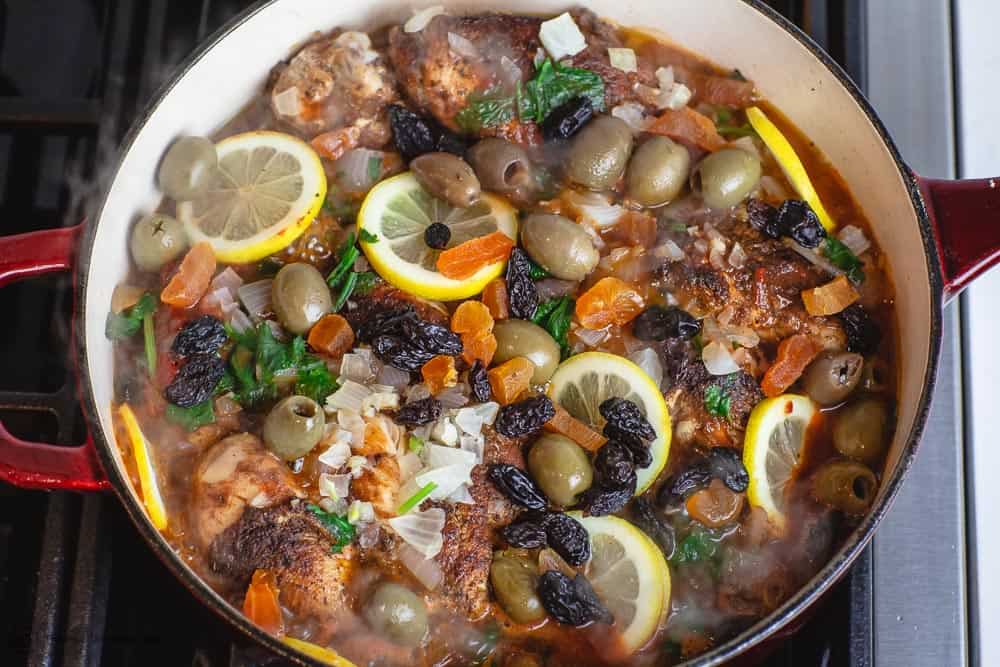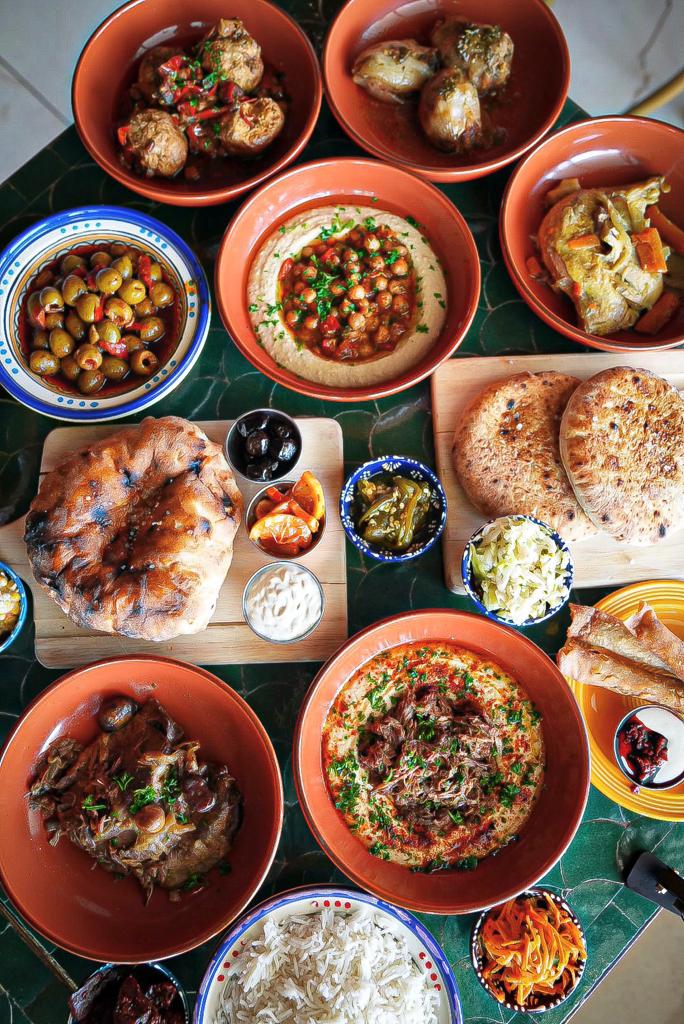Mediterranean Food: A Flavorful Trip Via Tradition and Taste
Mediterranean food offers as a remarkable intersection of practice and preference, attracting from a diverse array of cultures that extend continents. The profound flavors and health advantages linked with the Mediterranean diet have actually gathered global affection, yet below its surface exists an intricate narrative of historical impacts and regional specializeds that necessitate additional exploration.
Origins of Mediterranean Food
The beginnings of Mediterranean food are deeply rooted in a rich tapestry of background, geography, and social exchange. This cooking custom emerges from a region defined by its diverse landscapes, including coastlines, hills, and abundant plains, which have actually influenced its farming techniques and food production. The Mediterranean Container, incorporating nations such as Italy, Greece, Spain, and Turkey, has been a crossroads of worlds for millennia, where trade courses helped with the exchange of ingredients, methods, and cooking philosophies.
Old cultures, including the Greeks and Romans, dramatically shaped Mediterranean foodways, stressing the value of fresh, seasonal fruit and vegetables and communal eating. The spread of farming, especially the growing of olives, grapes, and grains, laid the structure for recipes that stay staples today. The impact of different conquerors and traders, such as the Moors and Ottomans, introduced new tastes and cooking styles, better enriching the cuisine.
Today, Mediterranean food is commemorated not only for its flavor and diversity but also for its focus on healthy eating, personifying a balanced approach to nourishment that remains to interest worldwide tastes. This historical interplay of components and societies forms the significance of what we currently recognize as Mediterranean food.
Trick Active Ingredients and Tastes
Mediterranean food is defined by a dynamic range of key components and flavors that mirror the region's farming bounty and social heritage. Central to this cooking tradition are fresh vegetables, fruits, and herbs, which give vivid preferences and vital nutrients. mediterranean restaurant las vegas. Staples such as tomatoes, eggplants, olives, and bell peppers are regularly included, showcasing the area's varied climate and dirt
Olive oil, frequently pertained to as the foundation of Mediterranean cooking, imparts richness and deepness to meals. It is complemented by a variety of flavors and natural herbs, consisting of basil, garlic, and oregano, which raise the tastes of meats, fish and shellfish, and grains. Grains, especially wheat and rice, work as essential components, with dishes like couscous and pasta being staples across the region.
In addition, beans such as chickpeas and lentils not only give healthy protein however also contribute to the food's robustness. The use of dairy, especially yogurt and feta cheese, includes creaminess and flavor. Finally, fish and shellfish, abundant in seaside areas, attributes prominently, with fresh fish and shellfish supplying a taste of the sea. Collectively, these components develop a harmonious balance that specifies Mediterranean food.
Regional Specializeds and variations
Varied regional variants and specializeds characterize Mediterranean food, mirroring the distinct social impacts, geography, and history of each area. In the seaside regions of Italy, as an example, fish and shellfish preponderates, with meals like Sicilian caponata showcasing a blend of eggplant, olives, and capers. Greece is renowned for its usage of feta cheese, olives, and fresh natural herbs, evident in classic preparations such click reference as moussaka and spanakopita.
The Levantine countries, including Lebanon and Syria, emphasize making use of grains and spices, with specializeds like tabbouleh and kibbeh taking spotlight. North Africa, specifically Morocco, stands out for its aromatic tagines and couscous, commonly enriched with dried fruits and an abundant variety of spices.
In contrast, the Iberian Peninsula highlights using healed meats and bold tastes, with Spanish paella and Portuguese bacalhau exemplifying the area's culinary variety.
Each Mediterranean area not just celebrates its local active ingredients however likewise shows the historic trade paths and cultural exchanges that have formed its food culture, developing a dynamic tapestry of tastes that astounds the palate.
Food Preparation Methods and Designs
Food preparation strategies and designs in Mediterranean food are as differed as the regions themselves, typically mirroring offered ingredients and neighborhood customs. The heart of Mediterranean cooking depends on its simplicity, where fresh fruit and vegetables, natural herbs, and olive oil take spotlight. Techniques such as cooking, toasting, and sautéing are typically utilized, allowing the all-natural tastes of the components to radiate.
Grilling, common in coastal areas, instills seafood and meats with a great smoky splendor, while roasting, specifically in the Center East, improves the sweetness of root vegetables and meats. Sautéing, typically used in Spanish and italian dishes, offers a fast approach to bring out the richness of garlic and onions, working as a structure for numerous sauces.
Stewing is an additional crucial strategy, particularly in North African cuisines, where tagines simmer fragrant flavors and tender meats slowly, fusing tastes gradually have a peek at these guys - mediterranean restaurant las vegas. Baking, especially in the context of bread and pastries, holds a substantial place in Mediterranean society, with each area boasting its own specialties. In general, these varied food preparation approaches not only celebrate the active ingredients but also mirror the deep-rooted culinary heritage of the Mediterranean, making each recipe a testament to its rich history

Wellness Conveniences of Mediterranean Diet Plan
Regularly acknowledged for its numerous wellness benefits, the Mediterranean diet highlights the usage of whole, minimally processed foods that advertise overall well-being. This nutritional pattern is rich in fruits, vegetables, whole grains, legumes, nuts, and healthy and balanced fats, specifically olive oil, while urging modest consumption of fish and poultry and restricting red meat and desserts.
Study consistently links the Mediterranean diet to a variety of wellness advantages. Significantly, it has actually been linked with a reduced threat of cardiovascular conditions, mainly due to its emphasis on heart-healthy fats and anti-oxidants. The diet regimen is additionally believed to improve cognitive feature and may reduce the threat of neurodegenerative conditions such as Alzheimer's.
Furthermore, the Mediterranean diet regimen supports weight monitoring via its focus on nutrient-dense foods that promote satiety. The high fiber material from fruits, vegetables, and whole grains aids food digestion and aids keep healthy blood sugar level degrees.
In enhancement to physical health and wellness, the Mediterranean diet regimen fosters social well-being, as it motivates public meals and shared culinary experiences. In general, embracing this diet plan is not just a course to enhanced health and wellness yet additionally a party of tastes, society, and neighborhood.

Conclusion
To conclude, Mediterranean cuisine functions as a rich tapestry of practice and preference, showcasing varied local tastes and active ingredients. The focus on fresh produce, olive oil, and aromatic natural herbs not just improves culinary experiences yet additionally promotes numerous wellness advantages. By embracing time-honored food preparation strategies and promoting public eating, this culinary heritage remains to inspire and connect people across cultures, solidifying its condition as a treasured and prominent element of international gastronomy.

Food preparation methods and styles in Mediterranean cuisine are as varied as the areas themselves, typically mirroring readily available components and regional traditions.In verdict, Mediterranean food serves as an abundant tapestry of tradition and taste, showcasing diverse local flavors and active ingredients.